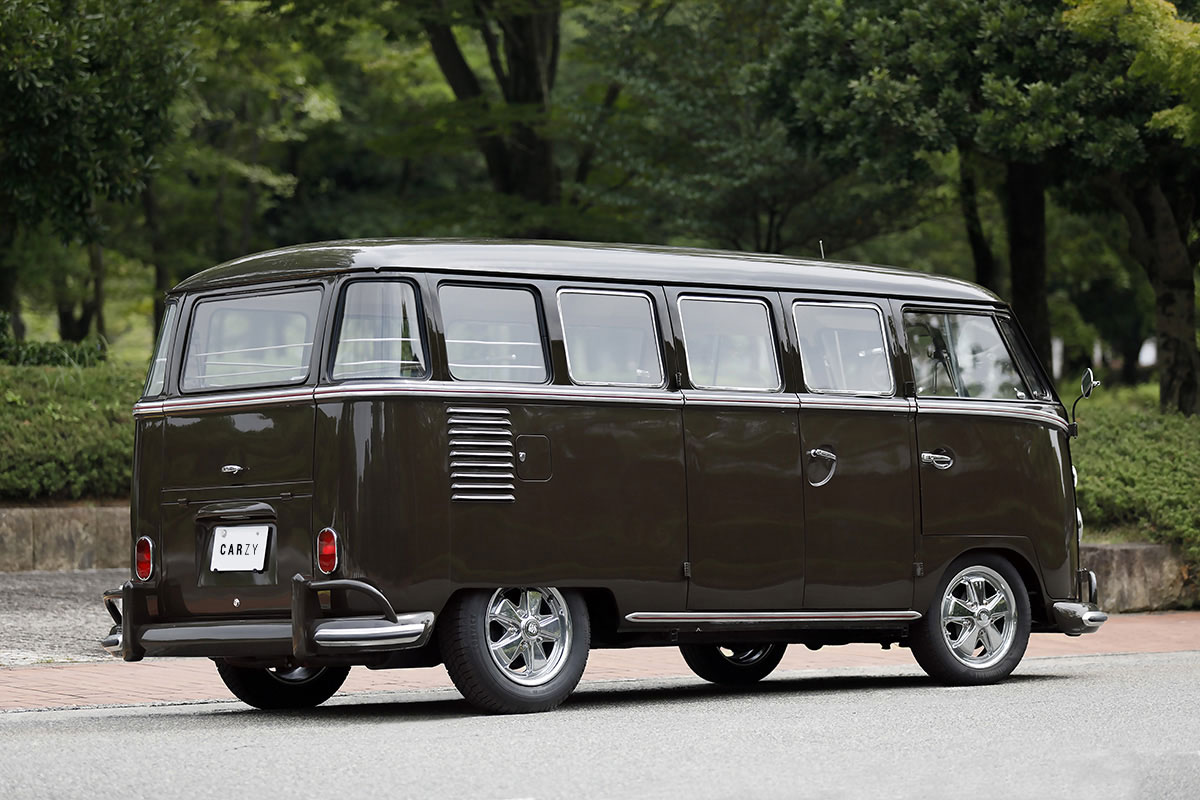1963 Volkswagen / Type 2
The original minivan that has been fully restored and can be used everyday.
*This is a translation done by a machine.
The Volkswagen Type 2 transporter was introduced in 1950 and was a mainstay of the company's early days. In Japan, it is affectionately known as "Wagen bus" and if you look at the picture, anyone who loves cars can immediately understand that "Oh, that car.".
By the way, type 2 is not the name of the car but the second type of Volkswagen. This is a derivative model of the first mass-produced vehicle known as Type 1, the so-called "Beetle", which was manufactured by adding a full-cab-over one-box body to the components with substantial enhancements based on the chassis.
In addition to its iconic design, it also has specifications that excel in basic performance as a commercial vehicle, including a comfortable independent suspension ride, a simple and extremely durable body, a low-floor floor that is easy to unload, and a tenacious and highly durable air-cooled, horizontally opposed 4-cylinder OHV engine. Vans, pickups, buses, trucks, ambulances, and other vehicles were also available. They quickly gained worldwide popularity. Along with the Beetle, they contributed greatly to the prosperity of Volkswagen from the 1950 s to the 1960s.
The name Type 2 suddenly became famous for its first-generation T1 (Transporter 1. The current car is called T6.), which was produced until 1967. When it was first released, sales increased as a utility vehicle, but because of its rounded, adorable style and simple, flat body, it could be enjoyed as a base for modifications (Materials). In the late 1960s, especially in the United States, a modified car with a psychedelic paint applied to the cheap T1 became an icon for the hippie boom.
In the 2000s, it caught on in Japan as a representative car of a customized primary-color system called "Carrick" which originated in California. Since then, it has been enjoying a boom all over the world. Every time a movement is made, the price continues to rise, and especially rare early models and multi-window microbus deluxe are auctioned for over 10 million yen, increasing the collection value year by year.
| Shinichi Yamazaki's Highlights! |
Volkswagen, which means "national car" in German. The Daihatsu Group has sold the world's largest number of vehicles (2016 – 2018) for 3 consecutive years. In this sense, Daihatsu can be said to be a national car not only in Germany, but worldwide. If the Volkswagen car is viewed from the standpoint of a collectible car, wouldn't it be a good idea to consider a series of models equipped with air-cooled engines manufactured over half a century on the rear? From the viewpoint of CARZY, which mainly deals with 2-door models, it is called Type 1 "Beetle", but the entry this time is Type 2, which can be said to be the original minivan. When I saw the actual car, my prior fear that "Will it meet the standards?" turned out to be groundless.
The interviewee vehicles are the luxurious microbus deluxe in the lineup. The 1963 model is in the latter half of the series as an early model, but it is the final model with a rear corner window called the 15 window, and the look with a Safari window that can be called a type 2 icon is a valuable point for VW vintage. In addition, when the current owner takes over the vehicle, he or she believes that "I want to make a VW bus that adults can ride and run safely even today." so that the original atmosphere is not lost and the entire vehicle, including the interior and exterior, is thoroughly restored. The more you look at the details of the chassis and putty, the more you'll see that it's built without compromise. The current owner prefers the CarleLook, which was popular in Japan around 2000, but the ride quality and handling are perfect by reexamining the alignment to match the roading. The key point is that the engine replaced with a new 1600 cc engine has been adjusted to keep the engine in perfect condition even when idling for a long time, so it can be finished for daily use.
In addition, each sheet is based on the original and recycled using almost the same material as at that time. Carpets were finished with an emphasis on atmosphere, such as remaking with materials that were reproduced by the same manufacturer at that time. The plating malls running from the body side to the front face, the screws used in the mounting parts, window hinges, and each window are original and there are some parts that are damaged. Changing it will polish up the beauty, but isn't it necessary for a vintage car not to be shiny but to have a little used atmosphere?
The purity of the individual is high, and the 15 window deluxe is likely to increase in value. In addition, it is a Type 2 car that can run without excess or deficiency even in the modern road situation because it has been improved to every corner. If you have it, it will give you LOHAS time as your partner in a rich life.
Vehicle Specifications
| Model Year | 1963 |
|---|---|
| Year of Purchase | Aug 1999 |
| Engine Capacity | 1,600cc |
| Mileage | 111,484km |
| Transmission | |
| Steering Wheel | Left |
| Color | Chocolate brown |
| Chassis No. | 1047298 |
| Engine No. | |
| Inspection | September 2020 |
| Area | Hyogo, Japan |





















































